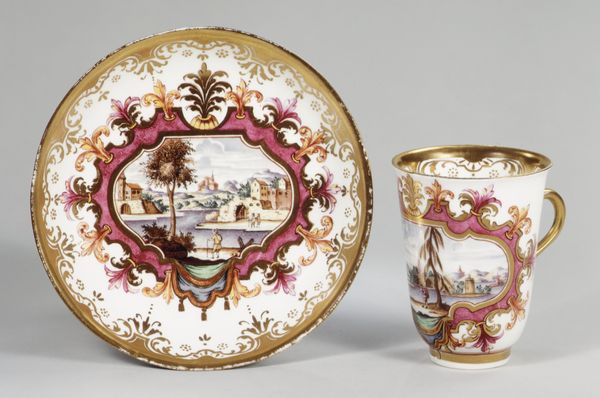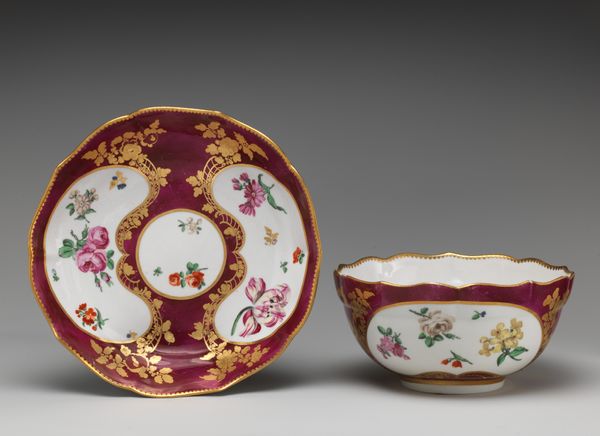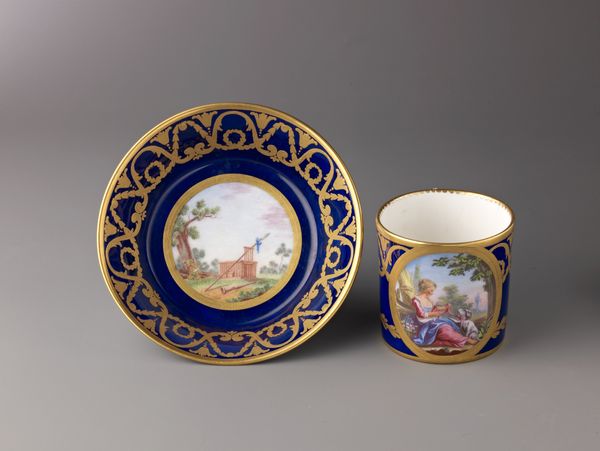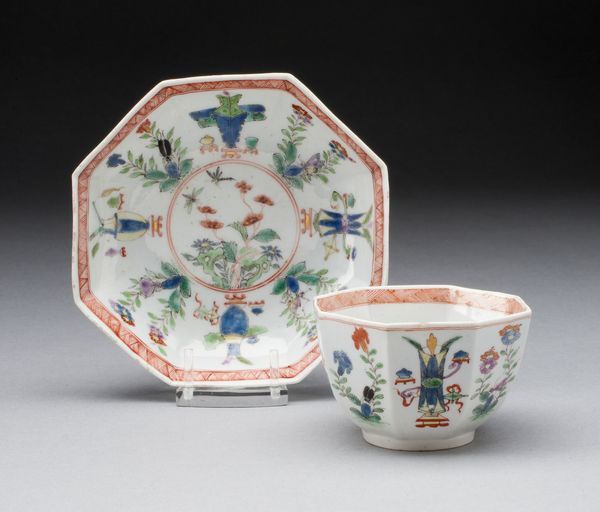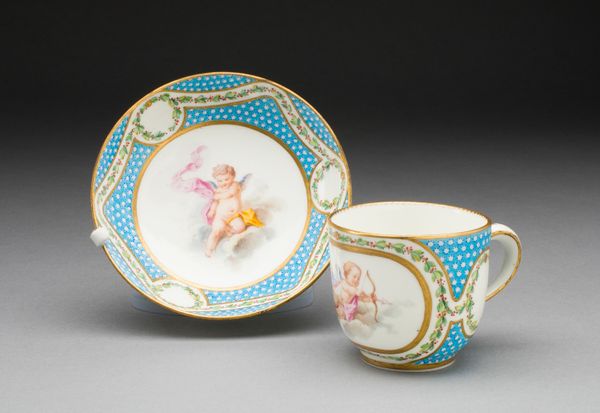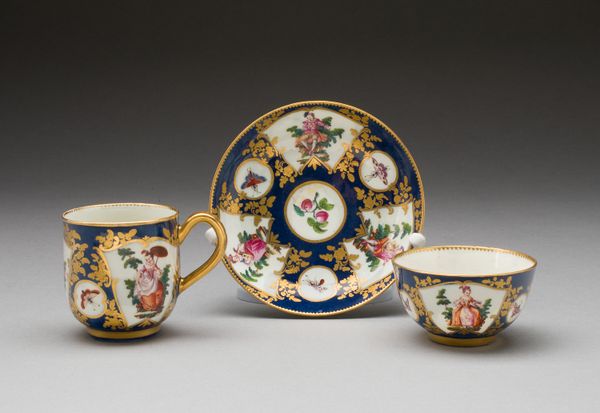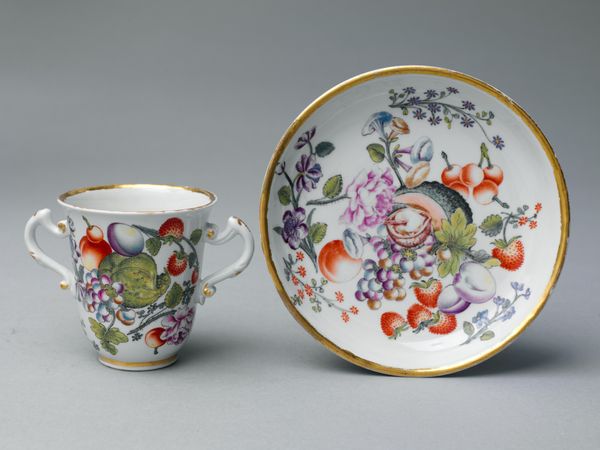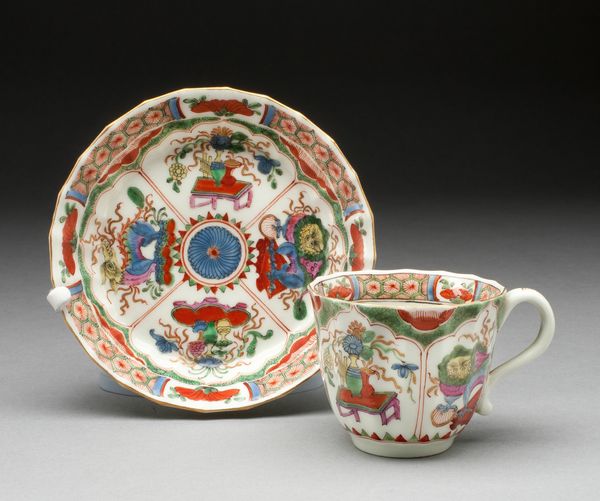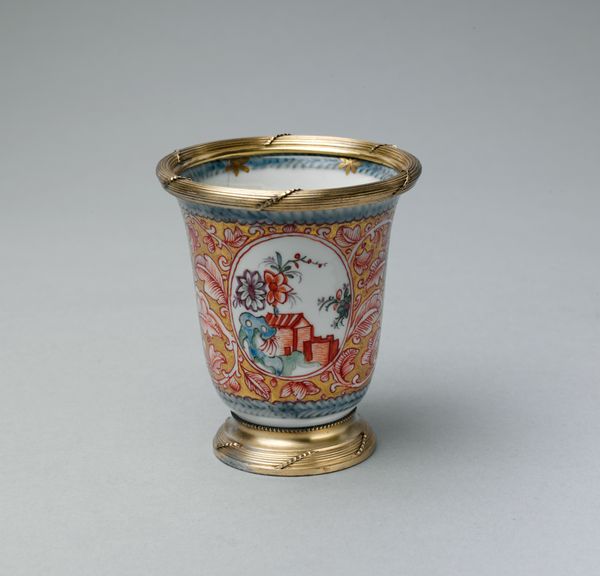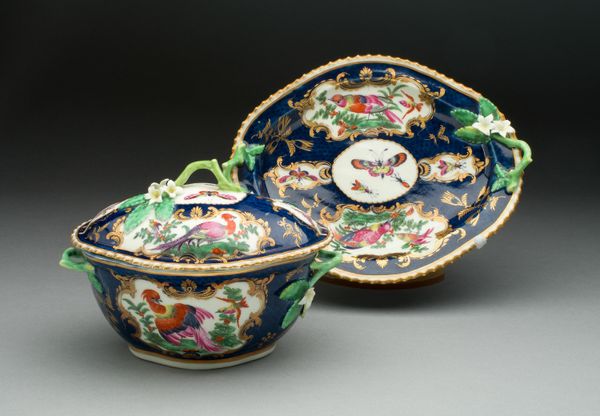
ceramic, porcelain, sculpture
#
ceramic
#
flower
#
porcelain
#
figuration
#
sculpture
#
ceramic
#
decorative-art
#
miniature
#
rococo
Dimensions: Overall (cup .1): 2 × 3 1/8 in. (5.1 × 7.9 cm); Diameter (saucer .2): 5 in. (12.7 cm)
Copyright: Public Domain
Curator: Looking at this Doccia porcelain cup and saucer from around 1745 to 1760, it’s impossible not to think about the rise of courtly culture and aristocratic rituals surrounding beverages like tea and coffee during this period. Editor: It strikes me immediately as dainty, almost frivolously so. The light yellow, the gold filigree... it's clearly designed for leisurely consumption, perhaps amidst polite conversation. Curator: Exactly. These objects became important markers of status and identity. The imagery on the cup and saucer— cherubic figures and floral arrangements—weren't merely decorative. They were deeply symbolic, evoking notions of innocence, natural bounty, and even subtle eroticism, all incredibly charged themes during the Rococo period. Think about the political implications of consuming luxury goods made for exclusive communities in Europe. Editor: The arrangement on the saucer into cross-sectional vignettes also creates this beautiful tension between structure and freedom; it’s ornamental yet rigorously contained. The gold latticework emphasizes division, yet the flowing Rococo design suggests continuity. Curator: And consider the labour behind these objects, often obscured in discussions of the elite. Porcelain production involved complex networks of trade, extraction of materials, and artisanal craftsmanship, with considerable global impact. How many hands, from so many diverse backgrounds, do you suppose shaped each piece? It pushes us to consider not only who consumed from these pieces, but who manufactured them and what material was used to produce it. Editor: Absolutely. Looking at this piece now, I notice the juxtaposition of what seems playful on the surface with the heavier aspects beneath; class, colonialism, global impact. The delicate ornamentation conceals the complex economic and political underpinnings of its existence. Curator: Indeed. It becomes clear that the study of decorative arts allows us to decode visual forms to understand hidden politics and social structures. Editor: Precisely, analyzing such visual languages helps unpack how luxury objects reflect—and sometimes perpetuate—specific power structures and inequalities in society.
Comments
No comments
Be the first to comment and join the conversation on the ultimate creative platform.
